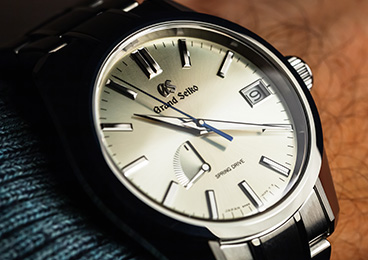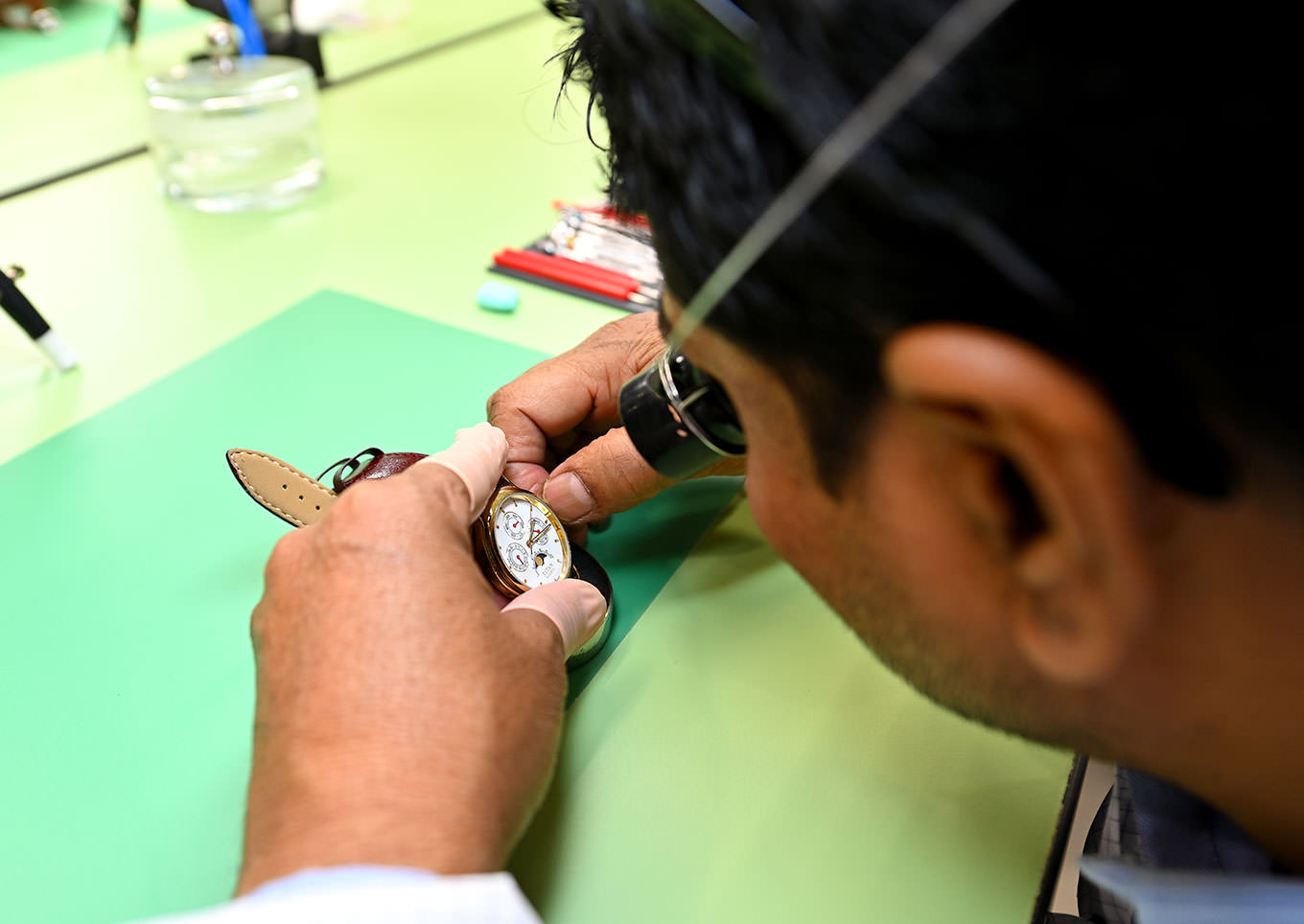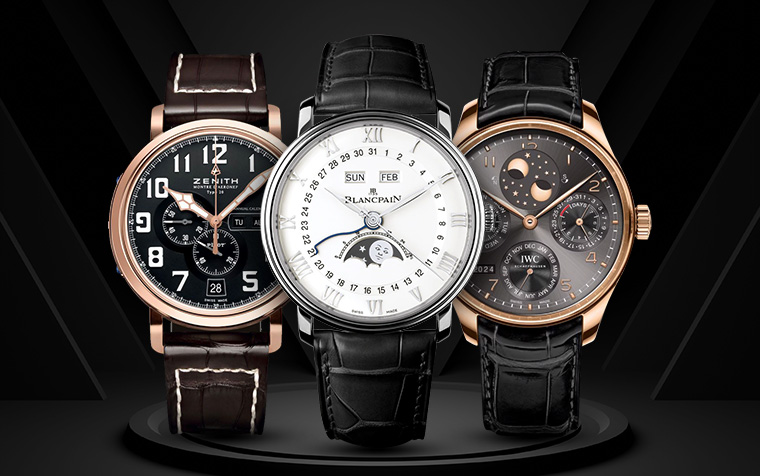 Trending Articles
Trending Articles
-
The History Of Japanese Luxury Watch Brand Grand Seiko
21 Aug, 20230
 Featured Video
Featured Video
A Collector’s Delight — Arnold & Son Time Pyramid
READ FULL STORYLuxury creations come with an underlying promise of perpetuity. But unlike designer clothes, bags, or shoes, hard luxury pieces can truly transcend time — making them an obvious choice for an investment. The fortune one spends on a high-end luxury watch often equates to a longer lifespan thanks to excellent engineering, fine materials, and craftsmanship. But like everything else, they require to be cherished and cared for with mindful usage and regular maintenance. Timepieces are often passed down through generations, and proper looking-after can largely aid in expanding their longevity. Moreover, if one is considering selling their luxury timepiece in the resale market, then a well-kept watch will fetch a better price. The last few years have witnessed a steep rise in pre-owned authentic watch demand. A McKinsey report also estimated the same, citing that pre-owned watches hit $18 billion in sales in 2019, projecting that they could hit $30 billion by 2025.
That’s why Second Movement brings you insider tips on how to increase the life of your luxury timepieces.
Tips For Taking Care Of Your Timepiece
Water resistance does not mean indestructible
Every luxury watch has a water-resistance rating (in either atmospheric pressure or water depth). Watches with a three-bar rating (or 3ATM/30m/100ft) do not imply that one can dive to 30m with them, as that can seriously harm the watch. These figures represent a standardised water resistance classification rather than in-use scenarios. For instance, the three-bar indication will only tolerate accidental splashes. In contrast, the five-bar (50m/165ft) can be used in the shower and swimming pool (although you really should be avoiding hot water and soap). Snorkelling and most other water sports are permitted at 10-bar (100m/330ft), while scuba diving is only allowed at 20-bar (200m). Give the watch a thorough inspection before going for a swim because the older it is, the less likely that the protective rubber seal inside is still in place. If you are planning to sell your luxury timepiece, a water-damaged watch will have its price beat down, primarily because of its costly repair.
Proper storage
When packing for a vacation, one must store their luxury timepieces in a dry, dust-proof watch box or display case. The case shields your luxury timepieces against intrusions like shocks or too much sunlight. Luxury watches of high value should be kept in a safe vault. An unattended automatic watch will eventually stop ticking, typically after 40 hours. In that case, it makes sense to consider a watch winder to prevent having to constantly rewind the watch, which isn’t always good for its longevity.
Professional cleaning
Although, “regular” can vary depending on how frequently a watch is used. One can wipe it down completely once every two weeks with a slightly damp cloth. Use a soft microfiber cloth to clean the watch’s glass to prevent scratches. You can easily give your branded watch a quick rinse under running water if it is watertight, which means it can withstand water pressure of up to 10-bar. Particularly after swimming in chlorinated or salt water, this is advised. Keep in mind that leaving detergent on the watch body could cause the crown and bottom gasket rings to degrade or even be destroyed. All luxury watches should be serviced every 4-5 years to work smoothly. Also, it significantly elevates the resale value of the piece in the pre-owned market.
Protection against magnets
We can hardly move these days without being exposed to magnetic fields. What isn’t dangerous to a person can still affect a watch or its inner workings in daily life. Electrical pieces of equipment emit magnetic fields, including our smartphones, everyday household appliances, electric motors, and even the magnetic clasps on your handbag. They might impact a watch’s accuracy. Although magnetic fields do not permanently harm your watch, they can reduce its accuracy or even stop it entirely. This is primarily due to the balance spring’s weakness, whose compression and expansion control the mechanism of your watch. If this hair-thin, metal alloy coil becomes magnetised and sticks to itself, your watch will run fast, slow, or stop.
Steel parts of your watch are also susceptible to magnetism. If magnetised, it can produce magnetic fields inside and exacerbate the issue. Soft iron cages or extra housings have been employed within watches since the 1930s to protect them from magnetism. In case your watch is magnetised, you can take it to a service centre or to an expert who will demagnetise the watch for you.
Don’t leave your timepiece close to devices that might produce powerful magnetic fields, such as speakers, refrigerators, mobile phones, magnets on bags or boxes, etc. When using the airport’s body scanner, we advise you to take your watch off.
Protecting the crown
It would be best if you took care of the watch’s crown because it is a barrier separating you from the delicate movement inside. Even if it’s a robust sport watch, keep it flat on a soft surface instead of resting it on the crown when not wearing. The sensitive winding system can experience additional lateral stress if you wind or adjust your watch while it is on your wrist. Best to take it off the wrist and wind it carefully, as the professionals advise.
Additionally, the movement might be harmed by giving the crown one last push after it has already stopped. Here, the general guideline is to quit applying pressure as soon as you encounter resistance. A damaged crown can rip off a significant percentage of the resale value of your luxury timepiece in the pre-owned watch market.
Adjusting your watch within the specified hours
Avoid making any date or day of the week corrections between 9:00pm and 3:00am (although each movement has its guidelines that might vary a little). The gear mechanism for the date typically starts to engage at this time and doesn’t entirely disengage until 3:00am. Tinkering with the crown during this “risk zone” could harm the equipment. The best approach is to avoid this period altogether. You can also use an automatic watch winder or keep it wound up to prevent any damage while your luxury timepiece is not in use.
Taking care of the strap
Although cleaning bracelets isn’t too tricky, if you don’t like chunky links, follow these cleaning instructions to clean your watch strap. Rubber straps of authentic luxury watches are simple to clean; you only need to wash them or wipe them down with a damp towel to get most of the dirt off. On the other hand, as fabric straps can come in various materials, check the manufacturer’s documentation for special instructions; otherwise, a mild fabric detergent will do the business.
Avoid using damp towels or running water to clean leather straps since leather dislikes water. If you have enough time to let it air dry afterwards, you can use a damp cloth to clean the surface quickly (never with a hairdryer). Otherwise, spend money on a specialised leather cleaner made for the type of leather.
Wrapping Up
Aside from these tips, your luxury watches must be serviced regularly by professionals to ensure it lives longer. Like prized jewels, these watches demand care. Caring for a luxury watch is a responsibility. So, these tips here holistically outline the essential things to take care of while owning and wearing luxury timepieces.
The Journal
Want to be the first to be in the know?
Sign up to be emailed when I publish new content. Read. Watch. Shop. Learn. Trade. All in one place.





















Conversation 0 comments